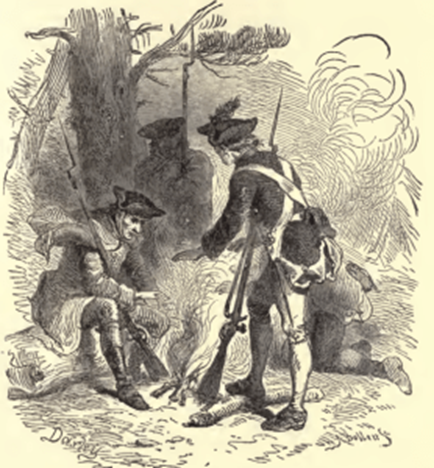 |
| OAFS Photo |
Tuesday, December 31, 2024
Reflections on the Last Few Days of 2024
Monday, December 30, 2024
New Year, New Things
Well, Campers, there has been progress on several fronts down in the great State of Texas. First, this post was written on my new (to me) Mac laptop. Seems the battery was a bit faulty when I bought the computer and it crapped out a few weeks ago. 3 weeks and ~$300 later it was functional again. Ahh Well!
While waiting for it to be returned, one morning I was looking out the window, this was the view. Picture doesn't really convey his size well. He was huge!
 |
| Drives the Great Pyrenees nuts, yes it does. They charge out of the house at full speed to the fence line. The steer just stands there and laugh's at them! |
Life is good.
What's the status of the Grand Kids? The eldest turned 3 the end of October. In fact, all three grand kids birthdays are the last 3 days of October, just an FYI. Makes it very easy to remember when gift purchasing is required. End of October and End of December. Heck, even I can remember that.
 |
| Mags got some wooden fruit so she could practice slicing them. |
In any case, MG got several outfits based on the "Frozen" movie. She seems to like them. Wears them 24 hours a day.
 |
| Running to show Grams her new dress. Speed was slightly more than my phone could handle. |
Her brother, Leon', just turned one and is walking and starting to put together sentences, so...Progress!
 |
| He also seems to enjoy riding the scooter! |
My Brother has completed his move out of SoCal and is ensconced in one of our guest houses. He has a couple of work from home gigs, so not likely to starve.
 |
| My younger brother watching the present unwrapping ceremony. |
Had a Christmas Morning video chat with Little Juvat, LJW and Miss B in England. All is well in Jolly Old, and Santa successfully visited their domicile also. We were a bit concerned about that. It IS quite a distance away, but the Military Postal Service came through with flying colors. Bravo Zulu, folks!
As mentioned earlier, this post also represents a major shift in the pattern of the Universe. Writing it on the Mac has a whole slew of different methods of writing it. Fortunately, MBD has been a Mac Nut for millennia and was willing to help me figure out how to do things (aka inserting pictures and positioning them).
Thanks, Sweetheart!.
It's been a very pleasant Holiday Season, Not a lot of drama, lots of stories told, Good Food, Good Wine. What a great way to celebrate this Holiday Season, hope yours went well also.
Peace out y'All!
Sunday, December 29, 2024
Letting it Idle ...
 |
| OAFS Photo |
 |
| Source |
Saturday, December 28, 2024
Cruising into the New Year
 |
| OAFS Photo |
 |
| Source |
Friday, December 27, 2024
Boxing Day
 |
| PxHere |
Thursday, December 26, 2024
John Blackshoe Sends: Serendipity History - Motivation matters - The Battle of Trenton 26 December 1776 - A bold, desperate Christmas gamble that changed history (Part 2 of 2)
 |
A German immigrant, Emmanuel Leutze, painted this artistic masterpiece in 1851. He actually painted three nearly identical versions. The first went to a museum in Bremen, German, where allied bombings destroyed it in 1942. This is the second, now in the Metropolitan Museum of Art. The third was slightly smaller and hung in the White House 1979-2014, and is now in the Minnesota Marine Art Museum in Winona, MN. (Which looks like a very nice museum!) (Source) |
 |
| (Source) |
 |
| Pennsylvania artist Harrington Fitzgerald (1847-1930) painted this version Washington’s crossing about 100 years after the Revolutionary War. Instead of showing the actual crossing, Fitzgerald shows the Continental Army on the New Jersey side of the river regrouping and preparing to march on Trenton. Fitzgerald spent much of his life working for a family-owned newspaper, but studied painting under several notable American artists, including Thomas Eakins and John Singer Sargent. Fitzgerald is best known for his works depicting the landscape of Valley Forge. (Source) |
 |
| Washington’s army marches to Trenton. (Source) |
 |
| Don Troiani’s rendition of Colonel Rall being hit while trying to form up his troops. (Source) |
 |
| (Source) |
Wednesday, December 25, 2024
John Blackshoe Sends: Serendipity History – Motivation matters – The Battle of Trenton 26 December 1776 – A bold, desperate Christmas gamble that changed history (Part 1 of 2)
 |
| (Source) |
 |
| (Source) |
 |
Insurrectionist Redoubt on Bunker Hill, waiting for the British attack, by Don Troiani, 2000. (Source) |
 |
Since 1775, “My A** Rides In Navy Equipment.” Marines landing in Nassau, Bahamas. The Bahamas in March are a nice place to go for a boat ride. Pennsylvania in December, not so much. (Source) |
 |
| Washington’s Plan, with Ewing’s Crossing (Red) and Cadwalader’s Crossing (Blue) south of Washington’s Crossing (Green). Library of Congress (Source) |
 |
| (Source) |
Tuesday, December 24, 2024
Tired, But So Blessed With Family¹
 |
| OAFS Photo |
Monday, December 23, 2024
Well…Nuts
As I reported a while ago, I had to take my new (to me) Mac laptop in to the repair shop because the battery wouldn't take a charge. It's still there. No problem, I think to myself, my PC is still working I can write this post on it.
Not so fast, Buckwheat. It took 15 minutes to boot and then another 10 to load blogger to write this post. Every click of the mouse is followed by what seems to be an interminable wait.
So, I'm writing this on my iPad, which apparently doesn't insert the HTML code necessary for, oh I don't know, a web page.
Sorry, hopefully I'll have the Mac back in time for next week.
Merry Christmas, y'all!
juvat
Sunday, December 22, 2024
Still Alive ...
Saturday, December 21, 2024
The Solstice, or On the Road Again ...
 |
| Dawn on the Chesapeake Photo by Dave Harp Source |
 |
| OAFS Photo |
Friday, December 20, 2024
'Tis Done ...
- Push the button on the bottom of such and such ...
- Make sure the light comes on ...
- Now click the right mouse button and select such and such in the menu presented ...
Uh, was it supposed to flash like that, freeze up, then start over?
 |
| Source |




